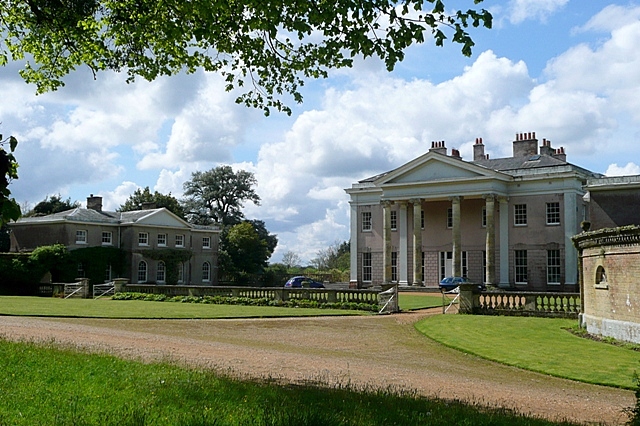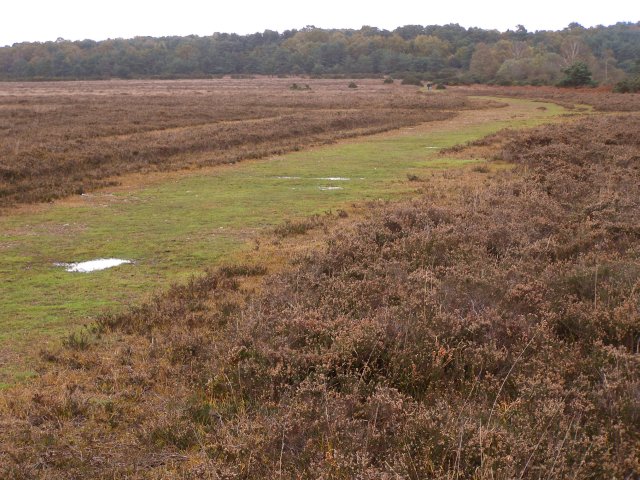Hale, Hampshire on:
[Wikipedia]
[Google]
[Amazon]


 Hale is a small village and
Hale is a small village and
It contains various tree species including oak, ash, birch, holly, lawson cypress, chestnut and hawthorn. It was taken over by the Parish Council in 1975 because no owner could be traced.
/ref> Alwi was also holding
Hale Parish Council
{{Authority control Villages in Hampshire New Forest


 Hale is a small village and
Hale is a small village and civil parish
In England, a civil parish is a type of administrative parish used for local government. It is a territorial designation which is the lowest tier of local government below districts and counties, or their combined form, the unitary authority ...
in Hampshire, England. It lies on the border of the New Forest
The New Forest is one of the largest remaining tracts of unenclosed pasture land, heathland and forest in Southern England, covering southwest Hampshire and southeast Wiltshire. It was proclaimed a royal forest by William the Conqueror, featu ...
, overlooking the valley of the River Avon. The village is about north-east of the town of Fordingbridge
Fordingbridge is a town and broader civil parish with a population of 6,000 on the River Avon in the New Forest District of Hampshire, England, near the Dorset and Wiltshire borders and on the edge of the New Forest, famed for its late medieva ...
, and about south of the city of Salisbury
Salisbury ( ) is a cathedral city in Wiltshire, England with a population of 41,820, at the confluence of the rivers Avon, Nadder and Bourne. The city is approximately from Southampton and from Bath.
Salisbury is in the southeast of Wil ...
. Within the parish stands Hale House, a large 18th-century mansion which was the country house of architect Thomas Archer
Thomas Archer (1668–1743) was an English Baroque architect, whose work is somewhat overshadowed by that of his
contemporaries Sir John Vanbrugh and Nicholas Hawksmoor. His buildings are important as the only ones by an English Baroque architec ...
, who also rebuilt Hale church in 1717.
Overview
Hale is a village to the northeast ofFordingbridge
Fordingbridge is a town and broader civil parish with a population of 6,000 on the River Avon in the New Forest District of Hampshire, England, near the Dorset and Wiltshire borders and on the edge of the New Forest, famed for its late medieva ...
in an area of woodland, to the east of the River Avon. It is a scattered community with some thatched cottages around the green, a village hall, and a Victorian school building which still houses the primary school.
At the centre of the village is Hatchet Green, which is a Site of Special Scientific Interest
A Site of Special Scientific Interest (SSSI) in Great Britain or an Area of Special Scientific Interest (ASSI) in the Isle of Man and Northern Ireland is a conservation designation denoting a protected area in the United Kingdom and Isle of ...
and a Conservation Area
Protected areas or conservation areas are locations which receive protection because of their recognized natural, ecological or cultural values. There are several kinds of protected areas, which vary by level of protection depending on the ena ...
.Hale Parish CouncilIt contains various tree species including oak, ash, birch, holly, lawson cypress, chestnut and hawthorn. It was taken over by the Parish Council in 1975 because no owner could be traced.
History
The manor of Hale does not appear in theDomesday Book
Domesday Book () – the Middle English spelling of "Doomsday Book" – is a manuscript record of the "Great Survey" of much of England and parts of Wales completed in 1086 by order of King William I, known as William the Conqueror. The manusc ...
of 1086. However, there was a hide of land in nearby Charford
Charford is a small village located close to the town centre of Bromsgrove in Worcestershire, England.
History
Charford used to be farm land with a mill, Charford Mill (known as The Lint Mill) provided employment by the manufacture of sanit ...
held of the King
King is the title given to a male monarch in a variety of contexts. The female equivalent is queen, which title is also given to the consort of a king.
*In the context of prehistory, antiquity and contemporary indigenous peoples, the tit ...
by Alwi son of Torber.Victoria County History of Hampshire: Hale/ref> Alwi was also holding
West Tytherley
West Tytherley is a village and civil parish in the Test Valley district of Hampshire, England. Its nearest town is Stockbridge, which lies approximately 6 miles (10 km) north-east from the village, although its post town is Salisbury. The ...
at the time of the Domesday Book, and since Richard de Cardenvill, at the beginning of the 13th century, was holding Hale and West Tytherley of the King it is possible that this Charford estate was Hale.
In the 14th century Hale passed by marriage to Sir Robert Brent of Cossington, in whose family the manor remained for about two centuries. Hale was probably sold to one of the Penruddocks in the 16th century. Thus Robert Penruddock, who died childless in 1583, evidently had a lease of the manor and was the first of the family to settle at Hale. Around this time the original mediaeval church was substantially rebuilt, and there is a brass on the floor of the church to Sir John Penruddock, who died 8 March 1600.
In 1631 the classical architect Inigo Jones
Inigo Jones (; 15 July 1573 – 21 June 1652) was the first significant architect in England and Wales in the early modern period, and the first to employ Vitruvian rules of proportion and symmetry in his buildings.
As the most notable archit ...
was commissioned by Sir John Penruddock to remodel the medieval church or St Mary's in Hale as a Tuscan temple along the lines of St Paul's, Covent Garden. It has long been suspected that the church was Jones's, but the proof was only recently discovered by Kate Bennett in a manuscript in the Bodleian Library recording a Latin inscription in the hands of the Penruddock family attributing the church to Jones. (See also Dianne Duggan, 2003, 'Hale Church and St Paul's Church, Covent Garden', Hampshire Studies 58, published by the Hampshire Field Club and Archaeological Society.)
Hale passed by marriage into the Gage family, until Thomas Gage, 1st Viscount Gage
Thomas Gage, 1st Viscount Gage (c. 1695 – 21 December 1754) of High Meadow, Gloucestershire and later Firle Place, Sussex, was a British landowner and politician who sat in the House of Commons as a Whig for 33 years between 1717 and 1754.
...
of Castlebar
Castlebar () is the county town of County Mayo, Republic of Ireland, Ireland. Developing around a 13th century castle of the de Barry family, de Barry family, from which the town got its name, the town now acts as a social and economic focal poi ...
in Ireland, apparently sold the manor between 1713 and 1720 to Thomas Archer
Thomas Archer (1668–1743) was an English Baroque architect, whose work is somewhat overshadowed by that of his
contemporaries Sir John Vanbrugh and Nicholas Hawksmoor. His buildings are important as the only ones by an English Baroque architec ...
, Groom Porter
The Groom Porter was an office at the royal court of the monarch of Britain, who had "the Inspection of the King's Lodgings, and takes care that they are provided with Tables, Chairs, Firing, &c. As also to provide Cards, Dice, &c. when there is ...
to Queen Anne, who at the latter date was licensed to inclose two roads in Hale between South Charford and Woodgreen
Woodgreen is a village and civil parish within the New Forest district of Hampshire in England.
Overview
Woodgreen lies between Breamore and Hale to the east of the River Avon.
. Archer demolished the Penruddock's Elizabethan Manor House and built the Palladian
Palladian architecture is a European architectural style derived from the work of the Venetian architect Andrea Palladio (1508–1580). What is today recognised as Palladian architecture evolved from his concepts of symmetry, perspective and ...
style Georgian Mansion which is here today. He also altered and enlarged the church, landscaped the grounds and planted the oldest part of the Lime Avenue. Andrew Archer, 2nd Baron Archer
Andrew Archer, 2nd Baron Archer (29 July 1736 – 18 April 1778), 18th-century British Whig politician, styled the Hon. Andrew Archer between 1747 and 1768.
Life
The son of Thomas, 1st Baron Archer, by Catherine, daughter of Sir Thomas Tip ...
held it before his death in 1778, his heirs being his three daughters. The May family took over in 1789, and the Goff family bought Hale in 1836. Joseph Goff endowed the village school in 1873.
The civil parish of Hale was formed in 1895. Until 1920, Hale was one large estate, and the village was effectively closed to outsiders, with no inn and no shops. In 1920, the estate was divided up and sold in lots. Hale House and its surrounding park still survives as the nucleus of the old estate.
Hale Park
To the west of Hale is Hale Park, home to aPalladian
Palladian architecture is a European architectural style derived from the work of the Venetian architect Andrea Palladio (1508–1580). What is today recognised as Palladian architecture evolved from his concepts of symmetry, perspective and ...
style Georgian Mansion, built by Thomas Archer around 1715 and added to over the years. The village church is to the north-west of the house. It is dedicated to Saint Mary. It is mostly 18th-century in date, but with its 17th-century nave and chancel retained. The house is now owned by Mr Patrick Hickman . He purchased the house and grounds in 1974
Hale Purlieu
Next to Hale is theNational Trust
The National Trust, formally the National Trust for Places of Historic Interest or Natural Beauty, is a charity and membership organisation for heritage conservation in England, Wales and Northern Ireland. In Scotland, there is a separate and ...
common of Hale Purlieu. Hale Purlieu is an area of heath and valley bog with typical flora and fauna. It was for centuries outside of the New Forest
The New Forest is one of the largest remaining tracts of unenclosed pasture land, heathland and forest in Southern England, covering southwest Hampshire and southeast Wiltshire. It was proclaimed a royal forest by William the Conqueror, featu ...
– the word "purlieu
Purlieu is a term used of the outlying parts of a place or district. It was a term of the old Forest law, and meant, as defined by John Manwood
John Manwood (died 1610) was a barrister of Lincoln's Inn, gamekeeper of Waltham Forest, and Jus ...
" means an area which has been "disafforested" and is not subject to forest law. It was brought within the boundary and the Verderer
Verderers are forestry officials in England who deal with common land in certain former royal hunting areas which are the property of the Crown. The office was developed in the Middle Ages to administer forest law on behalf of the King. Verderers ...
s' jurisdiction under the New Forest Act of 1964.
Notes
External links
Hale Parish Council
{{Authority control Villages in Hampshire New Forest